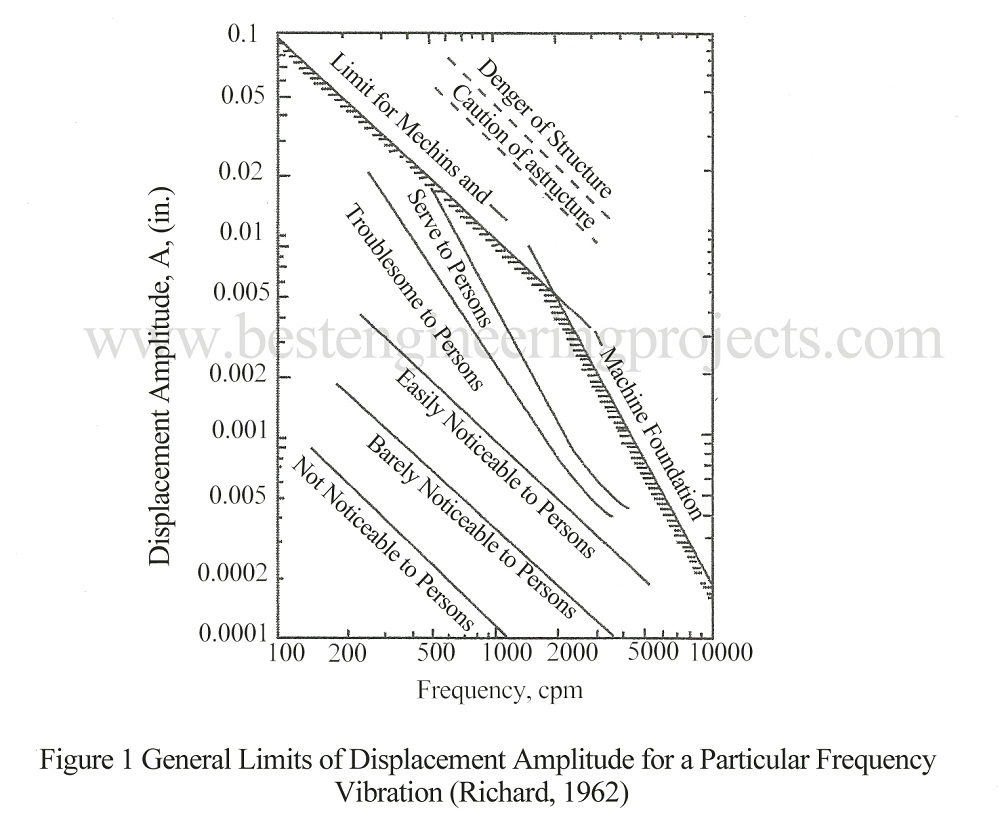In this article we are discuss about “Design Criteria of Machine Foundation”.
In the design a rigid block is assumed to rest directly in the soil. When acted by dynamic loads the rigid block as shown in Fig. 2 may vibrate in any one of six degrees of freedom and the complete evaluation of the response of the block is very complex. However many researchers have conformed from various studies that freedom of vibration in order to arrive at reasonable solution.
A vibrating foundation fails when velocity or acceleration or displacement exceeds a certain limit at a specified frequency. Thus the design criteria are limiting values of acceleration, velocity and displacements. In addition the foundation should be safe in shear and settlements should be within permissible limits. There should be no resonance. The center of gravity of machine and foundation should coincide. The vibration produced by machines should not cause any disturbance to persons and nearby structures. The ground water table should be at least at a depth of one fourth the width of foundation below foundation level.
Richart (1962) has developed curves between frequency and displacement (Fig.1) which limit the zone of different sensitivity of response. In the figure the shaded line is a “limit for machine and machine foundation”. This shaded envelop indicates a limit for safety and not a limit for satisfactory operation of machines. For a given frequency the curve provide a designer the maximum permissible limit of amplitude.
Check out other article on machine foundation posted on bestengineeringprojects.com
- Types of Machines | Types of Machine Foundation
- Machine Foundation | Introduction and Description
- Degree of freedom | Loads on Machine Foundation
- Method of Analysis of Machine Foundation

